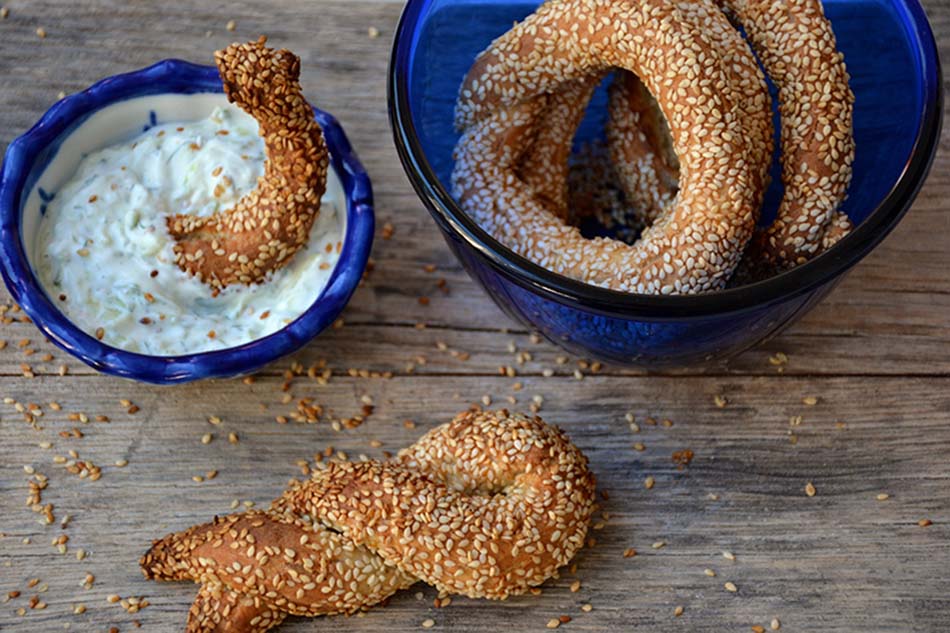
The Ultimate Guide to Greek Salad

The Ultimate Guide to Kleftiko: A Delicious Greek Tradition
The Ultimate Guide to Gyro: A Greek Delight
The culinary world is filled with diverse and exotic dishes, each with its own unique history and flavor profile. One such dish that has gained international fame is the gyro. Pronounced “yee-roh,” this Greek delight offers a harmonious blend of tender meat, fresh vegetables, and tangy sauces, all wrapped in warm pita bread. In this guide, we will explore the origins of the gyro, its ingredients, variations, and how to make it right at home.

What is a Gyro?
A gyro is a popular Greek dish comprising meat cooked on a vertical rotisserie, typically served in a pita wrap with tomatoes, onions, and tzatziki sauce. The dish can also be topped with fries and seasoned with various herbs and spices, making it a hearty and flavorful meal. The word “gyro” comes from the Greek word for “turn” or “revolution,” which relates to how the meat is cooked.
History of Gyro
Ancient Roots
The concept of roasting meat on a skewer dates back to ancient times. Various cultures, including the Greeks, Romans, and Persians, have culinary traditions involving spit-roasting. However, the modern gyro is believed to have its origins in 19th-century Ottoman Turkey with the introduction of the doner kebab, a similar dish.
The Greek Transition
In the early 20th century, Greek immigrants brought their version of the doner kebab to the United States, adapting it to suit local tastes. Over time, the gyro evolved into a distinct Greek-American dish that gained popularity in Greece and other parts of the world.
Ingredients of a Traditional Gyro
The main components of a traditional gyro are:
Meat
The meat used in a gyro can vary but often includes:
- Pork: Common in Greece.
- Chicken: A lighter option.
- Beef: Adds a different flavor profile.
- Lamb: Traditional in some regions.
Pita Bread
Soft and slightly chewy, pita bread serves as the vessel for the gyro’s other ingredients. It’s usually warmed up before serving.
Vegetables
Fresh vegetables add crunch and flavor, typically including:
- Tomatoes: Juicy and sweet.
- Onions: Sharp and tangy.
Tzatziki Sauce
A refreshing and tangy yogurt-based sauce made with:
- Greek yogurt
- Cucumbers
- Garlic
- Lemon juice
- Dill or mint
Extras
- Fries: Sometimes included inside the wrap.
- Herbs and Spices: Oregano, paprika, thyme, and cumin for seasoning.
Flavor Variations and Modern Twists
While traditional gyros are delectable, modern variations and regional twists have emerged, each offering a unique experience. Here are a few:
Falafel Gyro
A vegetarian option that swaps out the meat for crispy falafel, making it a hit among plant-based eaters.
Seafood Gyro
In coastal areas, you might find gyros made with shrimp or fish, adding a marine twist to the classic dish.
Vegan Gyro
Utilizes tofu or plant-based meats as a substitute for traditional meats, making it suitable for vegans.
Spicy Gyro
Includes spicy sauces or marinades, adding some heat to the traditional recipe.
How to Make a Gyro at Home
Making a gyro at home might seem daunting, but with the right ingredients and a bit of practice, you can recreate this Greek delight in your kitchen.
Ingredients
- 1.5 lbs of meat (pork, chicken, beef, or lamb)
- 4 pita breads
- 2 tomatoes, sliced
- 1 onion, sliced
- Fresh fries (optional)
- Spices: Oregano, paprika, thyme, cumin
- Tzatziki sauce (store-bought or homemade)
For Homemade Tzatziki
- 1 cup Greek yogurt
- 1 cucumber, grated and drained
- 2 cloves garlic, minced
- 1 tbsp lemon juice
- 1 tbsp olive oil
- Salt and pepper to taste
- Fresh dill or mint
Instructions
- Prepare the Meat: Cut the meat into thin slices. Marinate with oregano, paprika, thyme, cumin, salt, and pepper for at least an hour. Cook the meat on a griddle or pan until fully cooked.
- Make Tzatziki: In a bowl, mix the Greek yogurt, grated cucumber, minced garlic, lemon juice, olive oil, salt, and pepper. Add fresh dill or mint for additional flavor.
- Warm the Pita: Slightly warm the pita bread in an oven or on a pan.
- Assemble the Gyro: Lay the cooked meat on the pita bread. Add sliced tomatoes and onions. Top with dollops of tzatziki sauce. If you like, you can also add fries.
- Wrap and Serve: Fold the pita to enclose the fillings. Serve immediately for best flavor and texture.
Where to Enjoy Authentic Gyro
If cooking at home isn’t for you, plenty of restaurants and eateries specialize in authentic gyros. Here are some suggestions:
Local Greek Restaurants
Most cities have local Greek restaurants offering traditional and modern gyro variations. Look for those with high ratings and positive reviews.
Street Food Vendors
In Greece, gyros are often sold by street food vendors, especially in bustling areas. These can be some of the most authentic and delicious options.
Food Festivals
Greek food festivals, often held in major cities, provide a great opportunity to try gyros and other Greek dishes in a lively atmosphere.
Nutritional Value
A typical gyro can be quite balanced if made with lean meats and lots of vegetables. Here’s a quick rundown of its nutritional components:
Protein
The meat provides an excellent source of protein, crucial for muscle repair and growth.
Carbohydrates
Pita bread and optional fries add carbohydrates, necessary for energy.
Healthy Fats
Tzatziki sauce, made with Greek yogurt and olive oil, contains healthy fats that are good for your heart.
Vitamins and Minerals
Fresh vegetables like tomatoes and onions offer essential vitamins and minerals, contributing to overall health.
Conclusion
Gyro is more than just a meal; it’s a culinary experience steeped in history and rich in flavors. Whether you’re enjoying it at a local Greek restaurant or making it at home, this dish captures the essence of Mediterranean cuisine. So grab a pita, layer it with juicy meat, fresh veggies, and tangy tzatziki, and embark on a flavorful journey.
By following this guide, you are now equipped to appreciate and perhaps even master the art of the gyro. Whether you prefer the traditional route or modern twists, there’s a gyro for everyone to enjoy.


